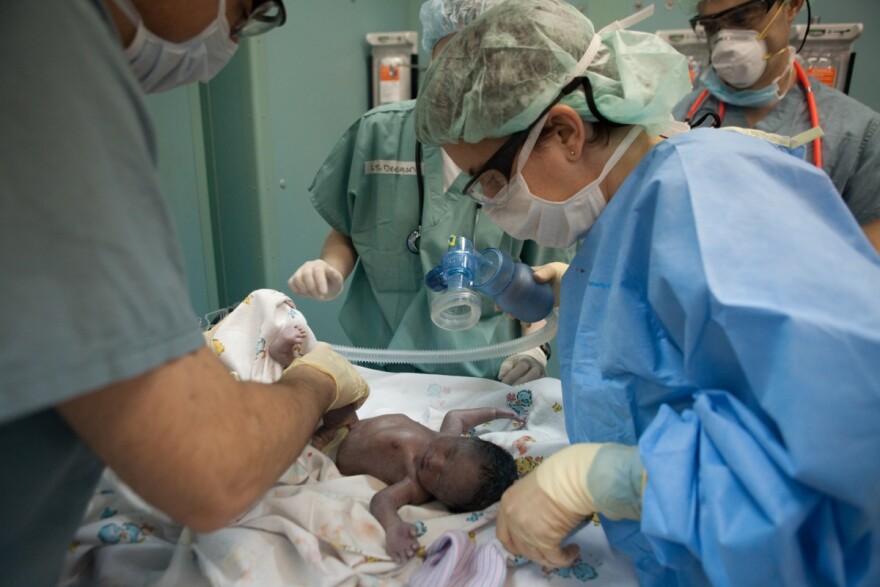With our free press under threat and federal funding for public media gone, your support matters more than ever. Help keep the LAist newsroom strong, become a monthly member or increase your support today.
Riverside has one of the biggest OB shortages in the US

Riverside doesn't have nearly enough obstetrician-gynecologists, according to a study released Thursday. The analysis also found Los Angeles to be shorthanded, although not nearly as much as Riverside.
Doximity, a network of medical providers, examined the ratio of births to OB-GYNs , and those doctors' ages, in 50 U.S. cities. Riverside topped the list of birth-to-doctor ratio; the average OB-GYN in the city delivers 248 babies a year, more than double the 50-city average of 105. L.A. has the eighth-highest ratio on the list, at 129.
Other large U.S. cities have much better ratios; the average New York City doctor handles 80 births each year.
California had more OB-GYNs than any other state in May 2016, according to the Bureau of Labor Statistics. But that doesn’t mean they’re evenly distributed throughout the state.
The Doximity analysis points out many OB-GYNs choose to retire early, around 59. The median retirement age is 64. The average OB-GYN in Los Angeles is 51.
Experts point to several factors contributing the OB-GYN shortage.
"Births are not predictable. They don’t run on a time schedule for moms or for providers," says Priya Batra, OB-GYN and medical director of the Inland Empire Health Plan.
"There are sleepless nights and then days when we go to work after having been up overnight helping patients. As we get older, it gets harder and harder to work like that," says Leena Nathan, an OB-GYN at UCLA Health.
She points out that the problem is exacerbated by the small number of new OB-GYNs coming out of medical schools, as well as "doctors who are limiting their practice to just office-based or surgical-based practice."
The field is "very litigious," says Nathan. "Malpractice premiums are extremely high. It’s one of the fields with the highest rates of lawsuits. So, that’s very stressful as well."
Her practice reflects a trend groups of obstetricians collaborating in ways that limit the number of days they’re on-call overnight.
Clinics that serve pregnant women for Inland Empire Health Plan try to make several services available to them in one location, such as social support, nutritional consultations and ultrasound, says Batra.
The OB-GYN shortage is particularly worrying because pregnant women can face various complications, and will see their doctors numerous times over the course of nine months.
"It’s not an insignificant amount of time that they’re spending in their doctors’ office," says Nathan. "So, it’s important to find somebody who has the time and the energy, who isn’t too burned out to provide proper care."
Riverside has shortages of other types of doctors besides OB-GYNs, notes Batra.
She's hopeful a variety of efforts will help put more providers in the pipeline, not only for Riverside, but for the entire county.
Locally, she points to the new medical school at UC Riverside, strategic use of telemedicine and a special fund that her health plan uses to supplement the incomes of physicians who choose to work in the area.







